Flamenco in Andalusia

Origins of Flamenco in Andalusia
The origins of the flamenco in Andalusia are unclear. Some say that it comes from the islamic monocords songs, others consider that it comes from the gipsies because no one knew their certain origins. Gipsies entered in the Iberian Peninsula at the beginning of the 15th century. They were soon known for their nomad style of life and their way of expressing feeling through dance and music. Due to this, the word flamenco started to be used as synonym of Andalusian Gipsy in the 18th century
Without any further debate about the real origin of flamenco, what we can state is that flamenco is born in the people. Flamenco is considered as an art with more than two centuries of history, a history linked to the singing, incorporating the magic of the tablaos with the guitar and the dancing.
Granada, Jerez and Seville were the departure points of the flamenco. The south of Spain is considered as the very cradle of it. It´s stages have been responsible for launching the huge cast of artists that created the spirit of flamenco.
Jerez de la Frontera
One of the most relevant cities for the Flamenco. The capital of the wine tells it´s story through the flamenco. It´s one of the cities that agglutinates more high quality artists. Jerez is full of magic, magic that is present in every and single tablao. La Guarida del Ángel, La Taberna Flamenca or Puro arte Jerez are responsable of delivering the most puere essence of Flamenco.
Seville
Capital city of Andalucia. The city breathes flamenco. Specially the Triana district. This places was one of the parents of the flamenco and it became it´s neuralgic core during the 18th and 19th centuries. It has his very own flamenco style, known as Soleá de Triana.
capital andaluza donde se respira aire flamenco por los cuatros costados, especialmente el barrio de Triana. Este barrio ha sido uno de los padres del flamenco, ya que ha visto nacer y crecer este arte, convirtiéndose en el centro neurálgico del flamenco durante los siglos XVIII y XIX, consiguiendo su propio estilo de cante conocido como soleá de Triana.
Through all this years the Triana District has had many locals and tablaos that have amplified the impact of the Flamenco. Seville counts with many places with live flamenco shows, based on the most pure and classic one.
Granada
Granada is one of the most relevant cities when we talk about flamenco. Gipsies arrived to Sacromonte´s Caves after the conquest of the city. Those caves became one of the cradles of Flamenco in the world and some of the terms that we use nowadays were born in this place such as Cante Jondo and Duende.
Many experts assure that this way of singing, the cante jondo, share its roots with the Indian music.
Granada was then and is now one of the main cores of flamenco. Specially in the flamenco singing. Granada was the birthplace of the Zambra, the fandangos, the granaína and the media granaína, without forgetting the Sacromonte´s tangos.
Flamenco has become a true revelation of Andalusian folklore, creating and popularizing stiles that remain pure nowadays. Becoming a musical style by itself.
-
Recent Posts
Recent Comments
Archives
- June 2025
- May 2025
- April 2025
- March 2025
- February 2025
- December 2024
- November 2024
- October 2024
- August 2024
- July 2024
- June 2024
- May 2024
- April 2024
- March 2024
- February 2024
- January 2024
- December 2023
- November 2023
- October 2023
- September 2023
- August 2023
- July 2023
- June 2023
- April 2023
- March 2023
- January 2023
- December 2022
- November 2022
- October 2022
- November 2021
- October 2021
- February 2020
- January 2020
- December 2019
- November 2019
- October 2019
- September 2019
- August 2019
- July 2019
- June 2019
- May 2019
- April 2019
- March 2019
- February 2019
- January 2019
- December 2018
- November 2018
- October 2018
- September 2018
- August 2018
- July 2018
- June 2018
- May 2018
- April 2018
- March 2018
- February 2018
- January 2018
- December 2017
- November 2017
- October 2017
- September 2017
- August 2017
- July 2017
- June 2017
- May 2017
- March 2017
- February 2017
- January 2017
- December 2016
- November 2016
- October 2016
- September 2016
Categories
Meta
